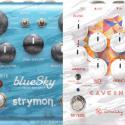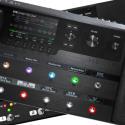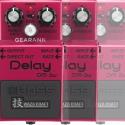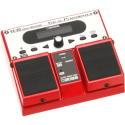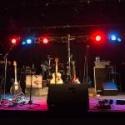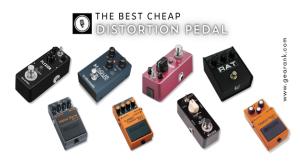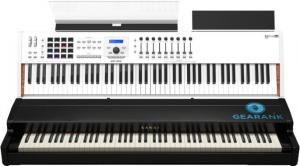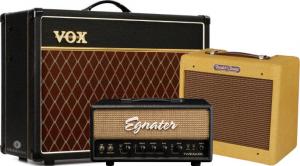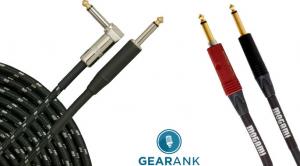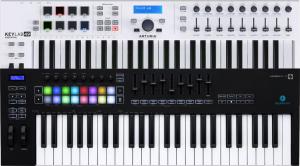Reverb vs Echo: Both Explained and How to Use Them
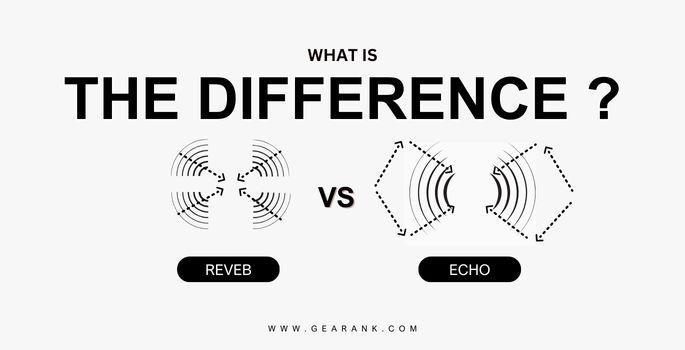
There's a lot to crossover when it comes to reverb vs echo. Both are sound effects created by delayed reflections. When deciding between them for music production or sound design, it's all a matter of understanding the timing and texture you need.
Reverb comes back to the ear quickly but for a longer period with a smooth decay. The sound bounces off a nearby surface, meaning we hear reverb in layers. Echo takes more time because it bounces off a surface further away. Echo has a distinct delay in the repeats.
You can use both echo and reverberation in music to create depth and dimension in a track. In this guide, I'll explore the differences in reverb and echo, and how to use them in your recordings.
What Does Reverb Mean?
Reverb is a sound reflection when sound waves bounce between hard surfaces. Reverb is short for reverberations. It refers to short reflections bouncing in multiple directions.
Reverb typically happens in small spaces. The multiple bouncing reflections add a layered effect to the sound. Reverb gives songs depth and color.
When Does Reverb Occur?
Reverb sound happens often, but you'll most likely hear it in small rooms and spaces, when short sound reflections occur. Try singing in the shower. The piled-on distortion that you hear is the result of reverb.
This means another place you'll find reverb is in small studios. You'll often get some reverb when recording music in a small studio room. This can add to recordings, building a richer, more natural sound.
Reverb also occurs in larger settings with crowds and mixed noises. The different sounds all layer on top of each other, creating reverb. Any place with multiple hard surfaces can produce reverb,
What's The Difference Between Reverb And Delay?
Reverb is a type of delay, but the two concepts produce distinct results in sound recording. Reverb produces a layered sound, occurring before the initial noise has finished. Delay produces a repeating sound, starting after the original noise has finished.
You can add both delay and reverb via plug-ins, pedals, or a sound mixer.
What Is Echo?
Echo is a natural effect that occurs when sound bounces back to the ear from a reflective surface. Echo occurs when there is a distance between the hard surface and the ear.
This leads to a delay between the original sound and the return. Delay and echo are similar technically, but differ slightly in their audio application.
Original Sound vs Return
Echoes happen when there is a delay between an original sound and the return. There will be a noticeable pause between the sound occurring, bouncing off a surface, and returning to the ear. The distance between the source and the listening device can affect the final sounds.
There's a longer echo when there is a big gap between the surface and the listening device. You might hear this in a large recording studio. It also happens in nature. For example, a returning shout in a large cave, with fading repeats equally distant in terms of time.
When there's a little gap, you'll get a tighter echo. You'll get this quicker echo if you record sound in a small studio. Again, this also happens in the wild. Think of an echo in a tunnel.
When you put a short delay on one stereo channel, it makes listeners perceive distance and direction, which is called the Haas Effect.
<a href="/haas-effect">Haas effect</a>
What's The Difference Between Echo And Reverb?
Echo and reverb are variations of the same delayed return of sound waves. They're audio effects created by hard surfaces and time delays.
It's All About Reflecting Sound Waves
Echoes and reverberations are caused by sound waves bouncing from a hard surface to a listening device. Reverb has a short bounce time. Echo has a longer bounce time.
The longer bounce time of the echo creates a distinct repetition of the original sound. You can hear it clearly over other sounds, after the initial noise.
With reverb, the sound comes back quicker and it comes back layered. Reverb starts before the original noise has finished. There isn't the distinct clarity of an echo. Instead, you get that layered effect.
Is Reverb or Echo Better?
Both reverb and echo are used when creating space in a recording. Adding reverb or echo during sound mixing can bring life to a studio recording. It creates an intimate feeling as if you're hearing music in person.
There's no winner when it comes to reverb and echo. It depends on the kind of sound you want to create. Both effects serve different purposes. A talented music producer knows when to choose reverb, when to pick echo, and when to leave it out. With reverb, room sound mixes with the original sound, which can be good or bad, depending on what you're accomplishing.
Using Reverb When Recording Music
Reverb adds depth to a recording. It creates a sense of reality, with multiple bouncing reflections emulating the natural reverb of live music. Reverb is often added to rock songs to create the feeling you're hearing it live. Reverb is also used when you want location sound mixed with your recording.
As well as adding energy to a mix, reverb can smooth the sound. Instead of each layer being distinct, the blurring effect of reverb brings it back to one continuous sound.
You can add reverb in music production, recreating the short bounces using digital reverb. But you can also capture reverb while recording. Reverb pedals can be used to add the effect of a bouncing sound to your guitar playing.
Using Echo When Recording Music
Echo adds atmosphere to music. The delayed response of the echo means we hear reflections separate from the original sound. It can bring strange and unusual effects to music.
You can also use echo to create emphasis. As the echo effect occurs after the original refrain, it reinforces the point. It isn't just for lyrics. Echoing drum effects, for example, can add power.
It is possible to capture echo effects in the original recording. However, you may prefer to add these sounds during production. You need to record in a huge empty room to get an excellent natural echo.
When To Avoid Echoes And Reverb
We hear echoes and reverbs in everyday life. It is sometimes desirable in recordings, but the delay effect can be annoying when it isn't used right. Especially when dealing with sound reflecting from multiple surfaces, which can sound like reflected noise.
It's vital that the digital recreation of sound bouncing feels natural. The wrong reverberation time can be hugely irritating. It can be confusing when different reverbs reach the listener's ear simultaneously. It can sound like something has gone wrong, like the sound is coming very different spaces.
That means we often need to treat echoes and reverb before recording. Nowadays, you can typically add Reverb effects like Plate and Spring Reverb in production to unify final sounds.
Treating Echo and Reverb When Recording
You must use materials that absorb sound reflections before they hit the mic to treat echo and reverb.
In your home studio, you can treat echo by covering hard surfaces with soft fabrics. These soft fabrics absorb the sound instead of bouncing it back. Acoustic panels are an effective solution for sound absorption. But for a more straightforward method, use heavy moving blankets.
We treat reverb similarly. Use acoustical foam to stop the sound from reflecting to the ear so quickly. It will capture the short sound reflections before they ruin your recording.
It's necessary to remove reverb and echo when recording speech. These reflections will muddy the clarity of the recording. Unnecessary reverb can make it sound like several people are speaking at once.
Consider removing reverb when recording lead vocals, as well. Again, this helps with clarity and creating a clean sound.
How To Prevent Unwanted Echo And Reverb
Echo and reverb are both caused by sound waves bouncing off surfaces. The best way to prevent unwanted reverb and echo is to remove the surfaces they can bounce off. This means covering hard surfaces with soft fabrics.
Acoustic tiles and acoustic foam panels can both be used to soften surfaces. Ideally, the room should be covered from top to bottom. Sound waves can bounce off both the ceiling and floor!
Recording in a smaller room can limit bounce time, reducing echo. And be careful where you place your microphone. You want it as close as possible to the sound source.
Frequently Asked Questions
Can You Use A Delay Pedal To Create Reverb And Echo?
Delay, reverb, and echo are all examples of time-based audio reflections. You can recreate reverb and echo using delay pedals. However, a delay pedal will create a repeated sound. A reverb pedal uses layered sounds to create trails.
Should I Add Reverb Or Echo First When Combining?
When combining an echo effect with reverb, it's better to use echo first. If you place reverb effect first, it will be further repeated in the echo. This can add muddiness to the track.
If you're choosing between echo vs reverb, reverb is layered, while echo is distinct. Reverb is often used for adding back room sound, which are often lost in recording.
Conclusion
Correct application of delay and reverb effects can make recordings sound unified in the same space.
When a sound is reflected off a hard surface, it returns to the listener's ear. This delayed effect can be an echo or reverb. It depends on how long it takes for the sound to reach us.
Longer sound reflections are echoes, while short sound reflections over a long period are reverb. Both can add depth to a track but must be used carefully.
You can read more to understand what is reverb and become accomplished in the world of reverb vs echo.



